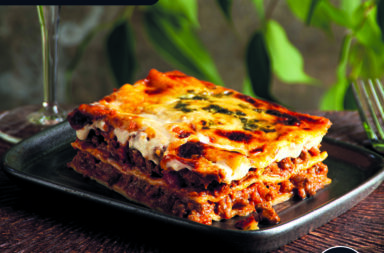Our trip to the Highlands brings back so many memories; the majesty and mystery of the place has no equal.
Words by Charlotte Harry and photographs by Terry Harry
Following the road north we stopped at a lay-by at the side of Loch Ba, an irregular shaped fresh water loch lying just to the east of Glencoe on Rannoch Moor, itself a site of Special Scientific Interest. The azure sky reflected in the stillness of the loch with shadows dancing around, the many rocks breaking the surface was just spectacular and a photographer’s dream. (In fact we have a canvas of the loch hanging in our bathroom!)
There are some places that live in your memory forever, and this next stretch of road winding its way through Glencoe, the “Glen of Weeping”, is one that will always stay with me. The majesty and sheer scale of the mountains and glens is awesome and the thought of the massacre of the MacDonalds in 1692 is heartbreaking and haunting. The history can be investigated at the disability friendly visitor centre at Glencoe. We stopped for a brief lunch at the Glencoe Mountain Centre which offers lots of activities to people of varying ability and disability, and has a spectacular chairlift.
We took the short ferry ride across Loch Linnhe to Ardgour. The Inn at Ardgour caters for people with varying disabilities, is family pet friendly and each of the 12 ensuite rooms have stunning views of Loch Linnhe. (You should advise when booking if you have specific needs and what type of breed your dog is.) Be sure to see the magnificent Glenfinnan Viaduct on the West Highland line in Glenfinnan – if it looks familiar, that’s because it featured in the Harry Potter films on the journey to Hogwarts. The viaduct gives a spectacular view of the Glenfinnan Monument on which stands a lone kilted highlander looking out over Loch Speith as a desolate sentinel to the final Jacobite rising and a Highland way of life that was so cruelly extinguished.
Our next stop was Fort William which lies in the shadow of Ben Nevis which rises to 1,433 metres; the highest point in the British Isles. It is a major point on the tourist map, with Glencoe to the south and roads to the Isles to the west. The Nevis Range mountain gondola system is the only one of its kind in Britain, and is a highly acclaimed visitor attraction in its own right. It is committed to ensuring that the facilities they provide are accessible to visitors of all physical abilities, including those with limited mobility.
Looking across the loch
Leaving Fort William behind us, we passed Neptune’s Staircase – Thomas Telford’s flight of eight locks on the Caledonian Canal – and carried on past Loch Lochy and on to the banks of Loch Ness. No monster made an appearance for us but looking out at the mysterious body of water, from the disability friendly visitor centre of Urquhart Castle, it is easy to see how the legend was born.
Turning right onto the A9 at Inverness our journey took us south east, passing Loch Moy on our left and on to Aviemore in the Cairngorms which rise to a height of 1,309 metres at Ben Macdui (second highest to Ben Nevis at 1,344 metres) and boasts one of the first ski centres in Britain.
For a short distance the road runs alongside the River Spey and just at the beginning of Loch Ericht we stopped at the Dalwhinnie distillery for a tour and whisky tasting. Situated in the Cairngorm National Park, the distillery produces a 15 year old single malt whisky known as ‘the gentle spirit’, and when paired with a specially selected handmade chocolate, the affect is just sublime.
Amongst the mountains
Suitably fortified, we continued along the picturesque A9 through Glen Garry, passing Bruar Falls and Blair Castle on our left, and took the route from Pitlochry along the River Tummel to the Queen’s View. This destination has been popular since Victorian times but is actually named after Queen Isabella, the fourteenth century wife of Robert the Bruce, who used to stop and admire the view on her travels. Not far from here is Loch Rannoch, a circular tour of which is a must. From Rannoch Station the West Highland Line runs two wonderful train trips carrying travellers either to the west coast and Oban or northward on from Fort William to Mallaig. Rising above the loch stands the mighty Schiehallion. This amazing mountain appears to be perfectly conical when viewed from the west and is sometimes described as the centre of Scotland as the midway points of longitude and latitude intersect near the summit.
No trip to the Highlands is complete without a trip to one or all of the Isles and the A87 from Invergarry out to the Kyle of Lochalsh, passing the Five Sisters of Kintail and the iconic Jacobite stronghold, Eilean Donan Castle, is one of the most scenic routes in Scotland and a beautiful way to reach the Isle of Skye where soaring sea eagles float above the Cullin mountains.
The Highlands is a place of myths and legends but what is real is the stunning beauty of the place, just waiting for you to discover it anew.
What To See:
The Highlands provides a sensory feast of things to see and to taste!
The Glenfiddich Distillery
The Glenfiddich tradition goes back to 1887. The best way to find out why it’s the most awarded whisky brand is to tour the distillery itself.
Disabled people that pre-book their distillery tour can organise a ‘flat tour’ which avoids inaccessible areas. All tours are for over 18’s only.
Dufftown, Banffshire, AB55 4DH Tel: 1340 820 373
glenfiddichbookings@wgrant.com
www.glenfiddich.com/uk/distillery
Basil Harbour Cafe
Cullen skink is a thick soup made of smoked haddock, potatoes and onions and the Highlands is well known for producing some of the best. The Basil Harbour Cafe is situated in the harbour area and according to one reviewer has “Cullen skink to die for.” (The cafe has good access and an accessible toilet.)
134 Harbour St, Nairn, Highland, IV12 4PH
Tel: 01667 454774
Loch Ness Centre and Exhibition
The exhibition charts the history of the legendary monster by exploring Scotland’s geological past, its folklore and the various research projects carried out on the loch.
A transcript of the tour is available for hearing impaired visitors and there are accessible toilet facilities. Some reviewers have noted that the exhibition is quite dark so people with visual impairments should take extra care.
Drumnadrochit, Loch Ness, Inverness, Highland, IV63 6TU
Tel: 01456 450573
www.lochness.com
Urquhart Castle
If you fancy your chances of seeing the fabled creature, some of the best views of the loch are at Urquhart Castle. Parts of the castle are inaccessible for wheelchair users but there are points where you can see the loch.
Drumnadrochit, Inverness, Inverness-shire, IV63 6XJ
Tel: 01456 450551
www.historic-scotland.gov.uk
Culloden Battlefield Visitor Centre
The bloodiest of all the Jacobite battles, Culloden, was also the last battle fought on British soil.
The exhibition conveys the story of Culloden and a battlefield guide is available to take out onto the site which displays text, video and still images with audio that corresponds to where you are on the battlefield using GPS technology.
The visitor centre incorporates several accessible features including: disabled parking and toilets, lends wheelchairs and scooters and has an induction loop available throughout the centre. Partially sighted visitors can use the new audio description tool, DiscoveryPEN, available at the front desk. (Call the Centre for more information: 08444932159.)
The battlefield paths and roof access are wheelchair accessible and suitable for mobility vehicles.
Culloden Moor, Inverness, Highland, IV2 5EU
Tel: 01463 796090
culloden@nts.org.uk





